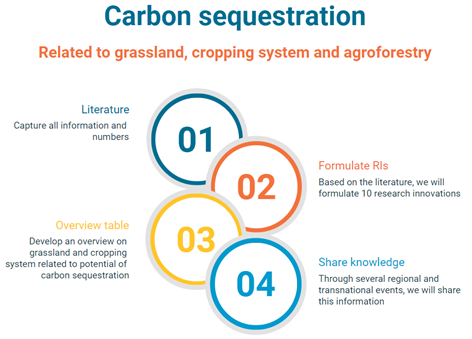CO2 is a gas emitted by human activity, being released in the atmosphere. It counts for 63% of the anthropogenic global warming. Plants are able to capture CO2 by photosynthesis and store it in the soil and in the roots, leaves and stems of the plant. This process is called carbon sequestration/soil sequestration and contributes to mitigate the global warming potential of CO2.
It is known that forests as well as grasslands are very efficient in capturing carbon. In addition, the soil type also plays an important role in this storage. For example, clay soil holds C better then sandy soil. But how much C is stored in the different soil types and under different crop types? What is the influence of crop rotation? And what are the best practices for a farmer to adopt on his farm?
Looking into literature, we would like to provide an answer on these questions. First, we will capture all information related to carbon storage in different crops, soils, etc. to have an overview what situation has the best potential. Second, we will formulate different research innovations to improve carbon sequestration in beef farming. Third, we would like to provide an overview table where you can see the window of potential carbon sequestration related to cropping system, region, grassland, etc.

Road map of the topic on Carbon sequestration